
| The Kosciuszko Lakes Walk |
|
|
|
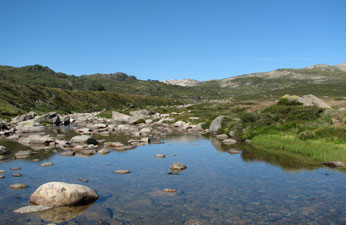 The Snowy - Australia's iconic mountain river |
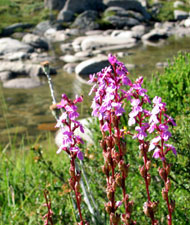 |
|
|
Quickly we entered the region of alpine meadows, dotted with the white, yellow and pink of alpine flowers. To the east lay Hedley Tarn, the first of several glacial lakes that we would pass. Climbing steadily on, the gently undulating rim of the range opened out above a broad basin as the track changed from paving to crushed granite. This is a fragile habitat that had suffered much from overgrazing by cattle up until the 1950s. It took a long time to recover from that and the National Parks authorities have made a big effort to protect it by providing good tracks for bushwalkers - the modern day equivalent of the cattle - please keep on them! |
|
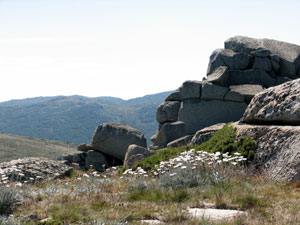 |
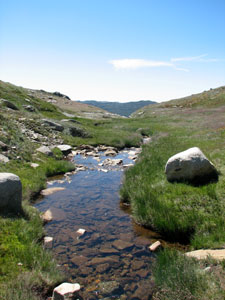 Alpine stream |
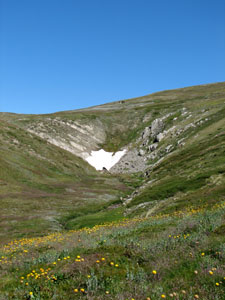 One of the last snow drifts |
As we climbed, we passed many granite outcrops, before crossing the crystal clear water of a mountain stream. The stream was fed by seepage and the melt waters of a remnant snow drift tucked into a south-facing gully and was lined by the bright green spongy plants of an alpine bog community.
Climbing over one more ridge, we emerged at a saddle overlooking Blue Lake, its surface shimmering in the sunlight beneath the rocky walls of Little Twynam. It was a good spot to take a break and admire this view and the silver and white carpet of snow daisies that stretched upwards toward the rim of the range. |
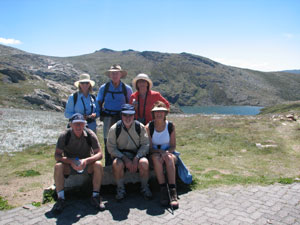 The obligatory group photo |
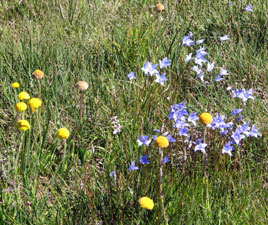 |
|
From Blue Lake, the ascent began in earnest up a natural earth track with sweeping views up the Snowy River Valley to the Etheridge Range and beyond. Around us the rounded shapes of Mts Clarke, Northcote and Lee defined the edge of a large glacial basin, while ahead the track climbed steadily toward Carruthers Peak, past rocky outcrops, bright green fens, clumps of mountain celery and ever more brilliant fields of alpine herbs. Soon we emerged at the saddle between Carruthers and Twynam, to be greeted by a cooling wind and a magnificent sweeping panorama across the pointed rocky outcrop of The Sentinel to the fading shades of blue of successive ridges to the northwest. In parts, the forest burnt in the severe fires of 2003 stood out starkly, like a grey cobweb spread across the landscape. The western side of the Main Range is much steeper and more rugged than the part we had just passed through and for the next few kilometres the track would take us through this quasi-alpine landscape. |
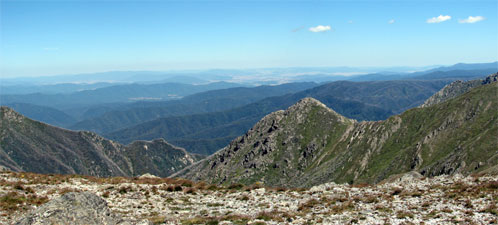 View across The Sentinel toward the north western slopes |
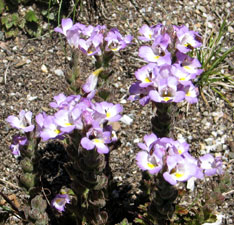 |
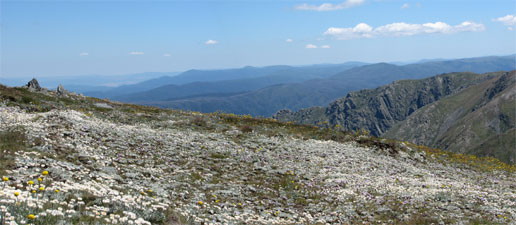 The glorious daisy fields near the top of Carruthers |
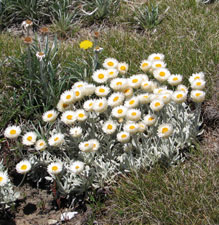 |
|
|
|
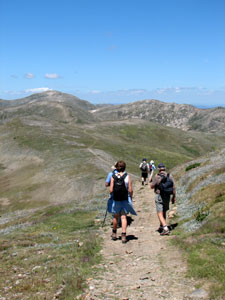 Descending from Carruthers towards the rounded dome of Kosciuszko on the horizon |
|
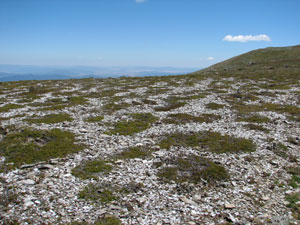 Feldmark plant community on the stony windswept ridge of the Main Range |
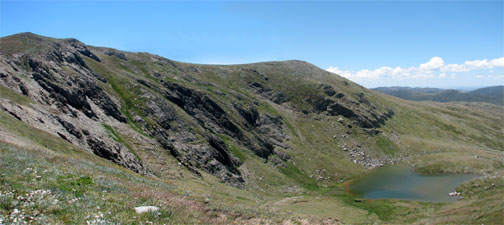 Club Lake - held back by terminal morain at the base of Carruthers Peak |
Ahead lay Mt Lee and, in the distance, a rounded dome resembling an ant nest, even more so with the many tiny black shapes moving across its top - it was Kosciuszko, Australia's highest peak and visited by hundreds of people on every fine weekend day, most of whom arrive via a metal-gridded ant trail from Thredo Village to the south. Soon, Lake Albina appeared below us to the west, beneath the the precipitous rocky slopes of Mt Townsend, "Little Austria" as it has been christened by off-piste skiers. It was a good place for a break before we traversed the steep slopes of Mt Northcote. |
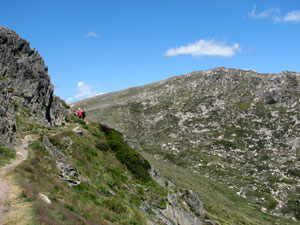 Traversing the steep slopes of Mt Northcote - with Mueller's Peak in the background |
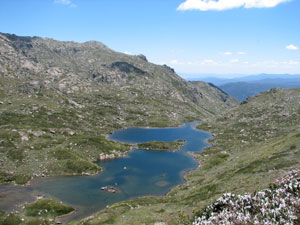 Lake Albina in its glacial bowl at the head of Lady Northcote Canyon |
|
|
|
|
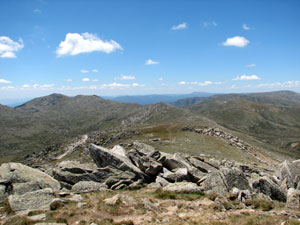 Views from Kosciuszko northward along the route we had walked |
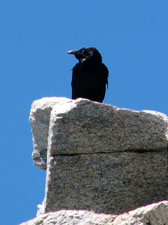 With several hundred visitors a day the pickings are good for Kosciuszko's ravens |
|
|
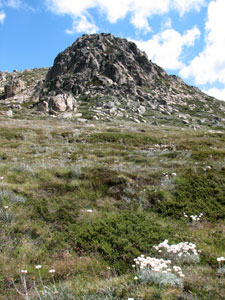 One of the impressive granite tors of Etheridge Spur |
|
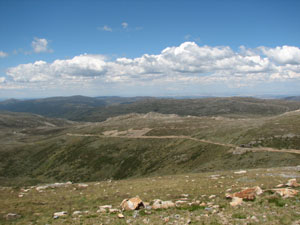 The Summit Road - our route home, cutting a long line into Etheridge Spur |
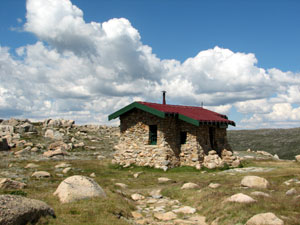 Lonely Seaman's Hut - built in memory of James Seaman who died in a blizzard at this spot in 1928 |
|
|
|
|
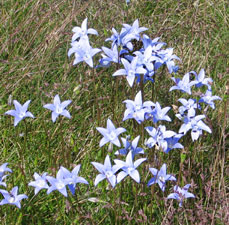 |
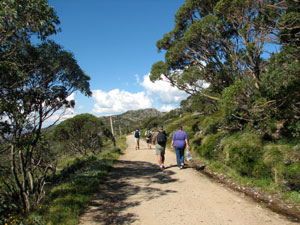 The road home through the Black Sallees |
|
|